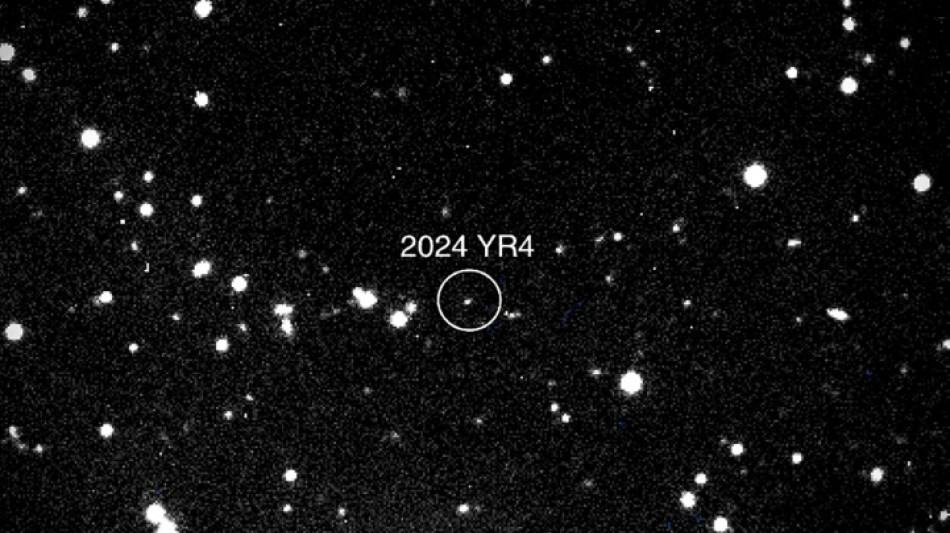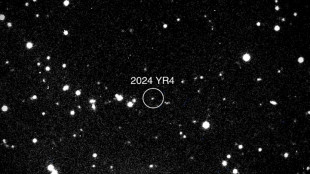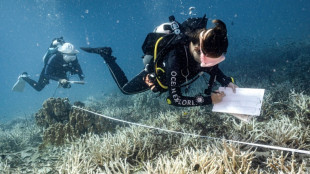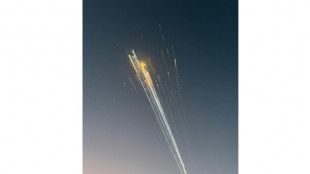
-
 'Matter of survival': Nations spar over nature funding at UN talks
'Matter of survival': Nations spar over nature funding at UN talks
-
German family-run machine maker issues SOS to future government

-
 Stock markets struggle on fears over Trump's China tech curbs
Stock markets struggle on fears over Trump's China tech curbs
-
Indonesia agrees to terms with Apple to lift iPhone sales ban: source

-
 Chance huge asteroid will hit Earth down to 0.001 percent
Chance huge asteroid will hit Earth down to 0.001 percent
-
Unilever boss to step down after less than two years at helm

-
 Kate Bush leads UK musicians in 'silent album' AI fight
Kate Bush leads UK musicians in 'silent album' AI fight
-
Hein Schumacher to step down as Unilever CEO

-
 Countries lock horns over cash for nature at rebooted UN talks
Countries lock horns over cash for nature at rebooted UN talks
-
Tesla rolls out advanced self-driving functions in China

-
 Asian markets sink as Trump tariffs, China curbs stunt rally
Asian markets sink as Trump tariffs, China curbs stunt rally
-
Trump calls for revival of Keystone XL Pipeline project axed by Biden

-
 Stuck in eternal drought, UAE turns to AI to make it rain
Stuck in eternal drought, UAE turns to AI to make it rain
-
Latin American classics get the streaming treatment

-
 Fires, strikes, pandemic and AI: Hollywood workers can't catch a break
Fires, strikes, pandemic and AI: Hollywood workers can't catch a break
-
Bolivia inaugurates steel plant built with Chinese loan

-
 Bahrain EDB Attracts Over USD 380 Million in Investment Commitments from Singapore
Bahrain EDB Attracts Over USD 380 Million in Investment Commitments from Singapore
-
'Assassin's Creed Shadows' leaked ahead of release

-
 Spain's Telefonica sells Argentina subsidiary for $1.2 bn
Spain's Telefonica sells Argentina subsidiary for $1.2 bn
-
Anthropic releases its 'smartest' AI model

-
 SpaceX targeting Friday for next test of Starship megarocket
SpaceX targeting Friday for next test of Starship megarocket
-
Frankfurt stocks rise on German vote outcome

-
 Greenpeace trial begins in North Dakota in key free speech case
Greenpeace trial begins in North Dakota in key free speech case
-
'Monster Hunter' on prowl for new audiences as latest game drops

-
 Apple says to invest $500 bn in US over four years, hire 20,000 staff
Apple says to invest $500 bn in US over four years, hire 20,000 staff
-
Frankfurt stocks, euro rise on German vote outcome

-
 German business urges 'new beginning' after election
German business urges 'new beginning' after election
-
Asian markets track Wall St loss; Frankfurt lifted by German vote

-
 China's Alibaba to invest $50 bn in AI, cloud computing
China's Alibaba to invest $50 bn in AI, cloud computing
-
Indonesia launches new multi-billion-dollar sovereign wealth fund

-
 Most Asian markets track Wall St loss; Hong Kong extends gains
Most Asian markets track Wall St loss; Hong Kong extends gains
-
Japan warns of avalanches, icy roads ahead of more snow

-
 Conservatives win German vote as far-right makes record gains
Conservatives win German vote as far-right makes record gains
-
'Captain America' slips but clings to N. America box office lead

-
 Tens of thousands vow support for Lebanon's Hezbollah at slain leader's funeral
Tens of thousands vow support for Lebanon's Hezbollah at slain leader's funeral
-
Tens of thousands pour in for Beirut funeral of slain Hezbollah leader

-
 Germans vote under shadow of far-right surge, Trump
Germans vote under shadow of far-right surge, Trump
-
Hong Kong and Singapore lead Asia's drive to cash in on crypto boom

-
 Well-off Hong Kong daunted by record deficits
Well-off Hong Kong daunted by record deficits
-
Trump tariffs shake up China's factory heartland

-
 Top issues in Germany's election campaign
Top issues in Germany's election campaign
-
Friedrich Merz: conservative on verge of German chancellery

-
 Germans go to vote under shadow of far-right surge, Trump
Germans go to vote under shadow of far-right surge, Trump
-
Oscars favorite Baker says indie film 'struggling' as 'Anora' tops Spirit Awards

-
 'Worst is over' as Chile's 'stolen' babies reunite with mothers
'Worst is over' as Chile's 'stolen' babies reunite with mothers
-
France's agriculture show, an outlet for angry farmers

-
 China's EV maker XPeng eyes doubling global presence by year's end
China's EV maker XPeng eyes doubling global presence by year's end
-
Germany on eve of elections under shadow of US-European rift

-
 France still seeking to block EU-Mercosur trade deal: Macron
France still seeking to block EU-Mercosur trade deal: Macron
-
Ukraine's earth riches are rare and difficult to reach


Chance huge asteroid will hit Earth down to 0.001 percent
The chance that a football field-sized asteroid capable of destroying a city will strike Earth in 2032 has fallen to 0.001 percent, the European Space Agency said on Tuesday.
A week ago, the asteroid set a new record for having the highest probability of hitting Earth -- 3.1 percent according to NASA and 2.8 percent according to the ESA. The planetary defence community has been scanning the skies.
However, as had been widely expected, fresh observations from telescopes around the world narrowed the area of uncertainty where the asteroid could strike, increasingly ruling out the odds of a direct hit.
The ESA said the chance was now down to 0.001 percent, adding that the threat level on the Torino Impact Hazard Scale was now at zero -- after hitting level three out of a possible 10 last week.
The asteroid, called 2024 YR4, was discovered in December. It is estimated to be 40-90 metres (130 to 300 feet) wide, which means it has the potential to devastate a city.
The impact date would have been December 22, 2032 -- but it is now extremely likely the asteroid will simply zoom past Earth.
Despite the plummeting risk, the James Webb Space Telescope will still observe the asteroid in the coming months, the ESA said.
Scientists had emphasised that even if the asteroid had been heading our way, Earth is now capable of fighting back. In the first test of our planetary defences, NASA's DART mission successfully altered a harmless asteroid's trajectory in 2022 by smashing a spacecraft into it.
Richard Moissl, head of the ESA's planetary defence office, told AFP that observing the asteroid -- then ruling out a direct hit -- was "a very exciting and educational exercise".
Praising the early detection of the asteroid, he emphasised that "there is still ample room for improvement".
Several new telescopes, such as the Vera Rubin and Flyeye, which are near becoming operational will enable astronomers to spot asteroids more quickly, Moissl said. So will Europe's planned early warning mission NEOMIR, he added.
The last time an asteroid bigger than 30 metres wide posed such a significant risk was Apophis in 2004, when it briefly had a 2.7 percent chance of striking Earth in 2029 -- a possibility also ruled out through additional observations.
H.Meyer--CPN
